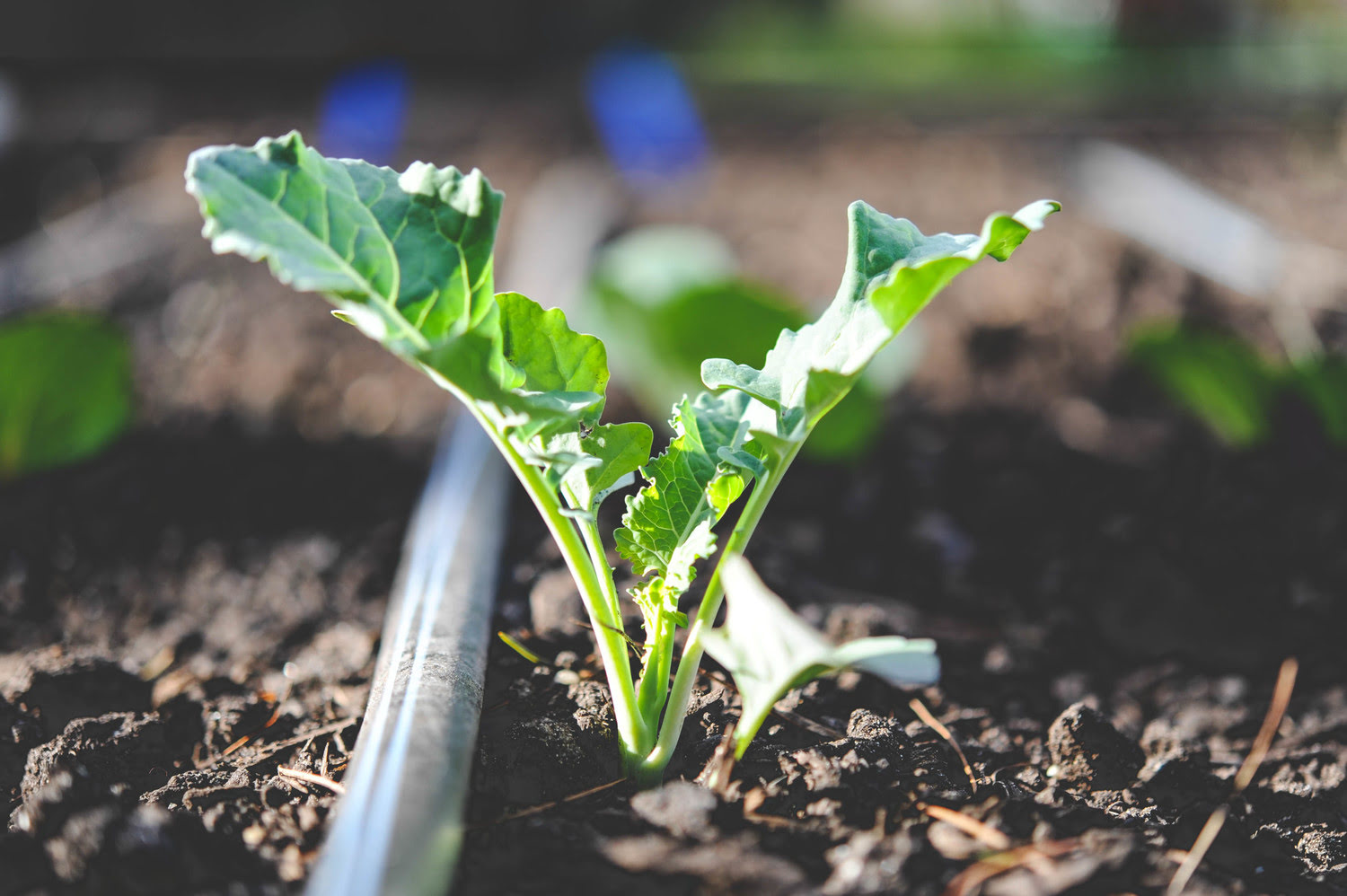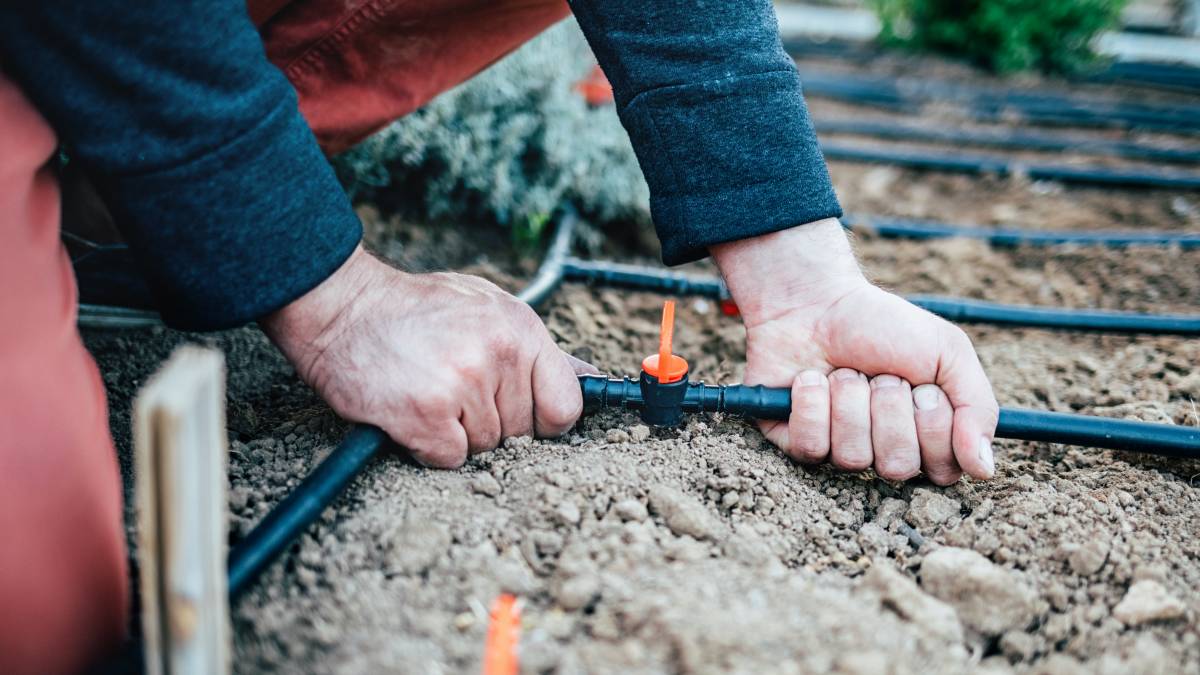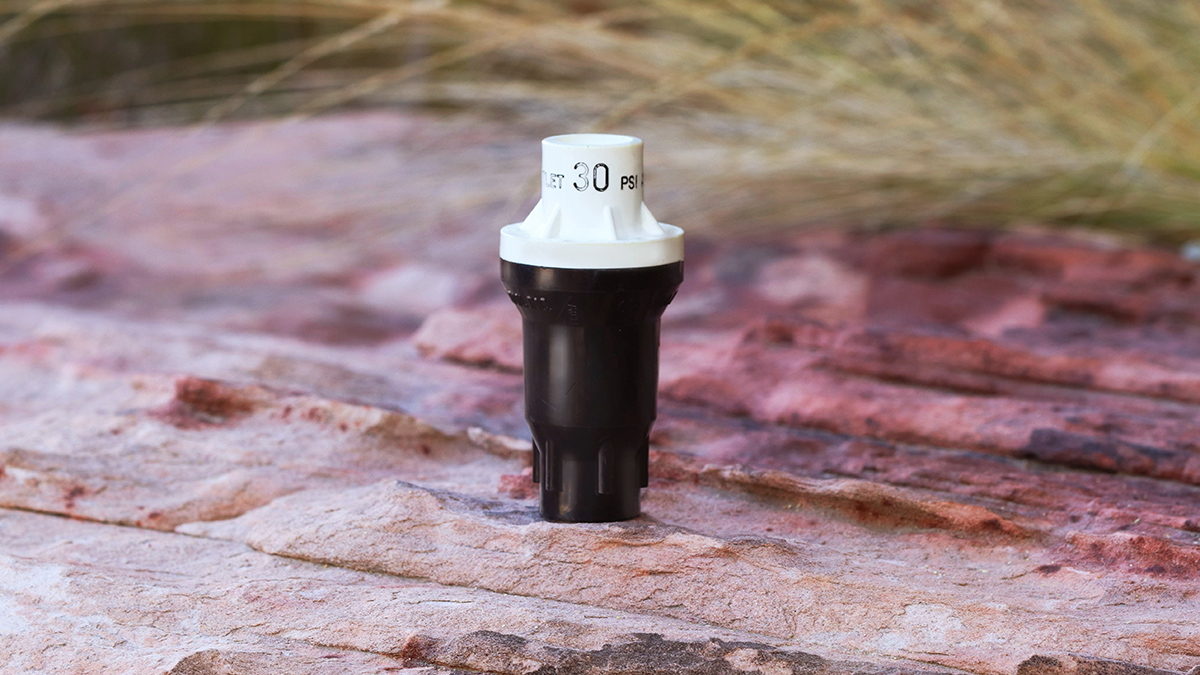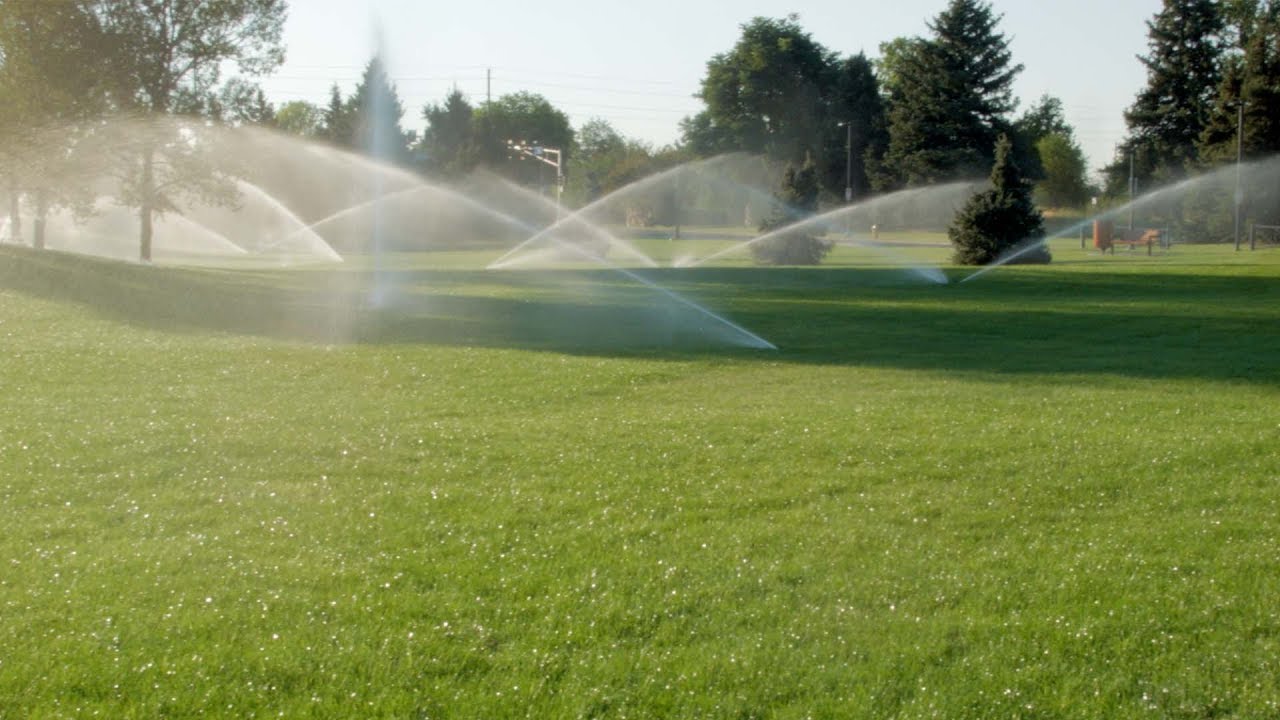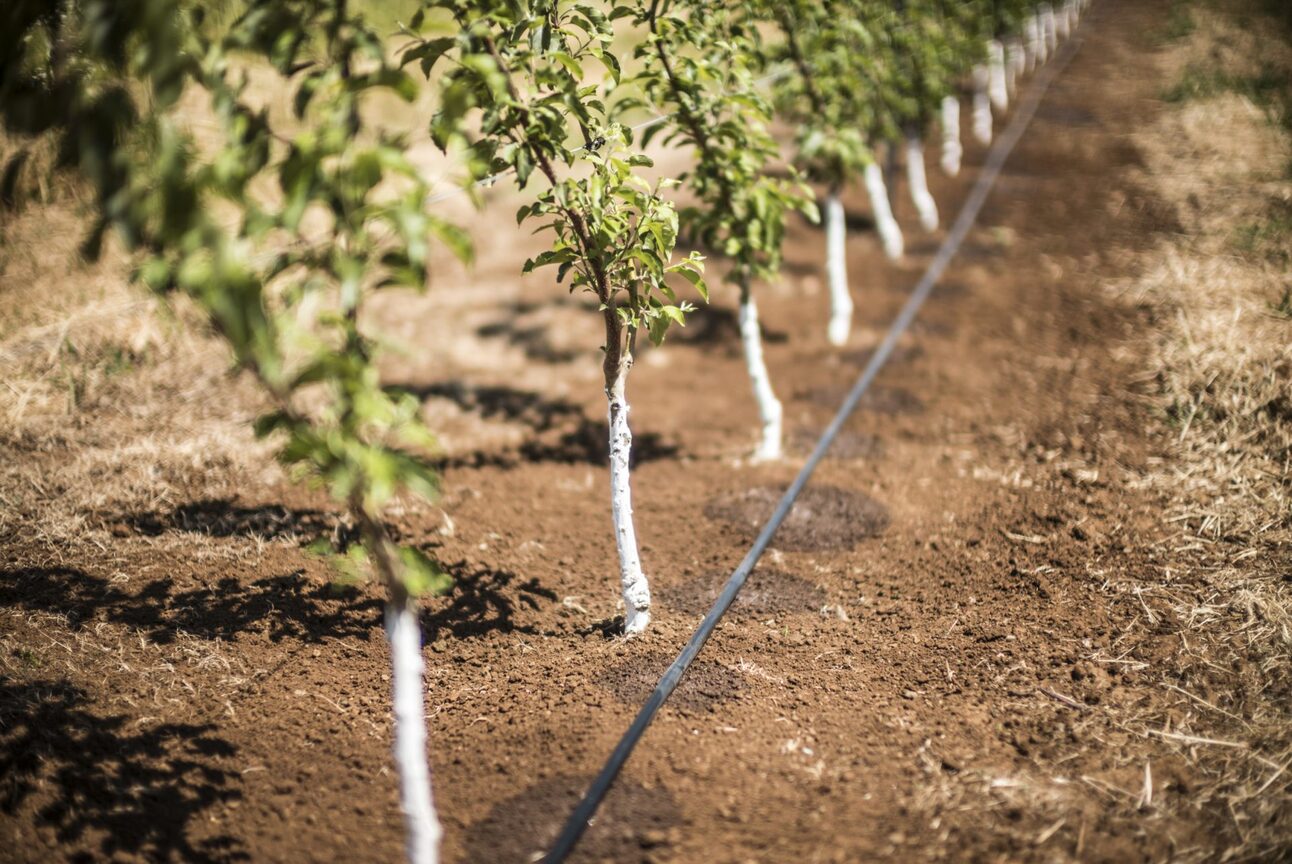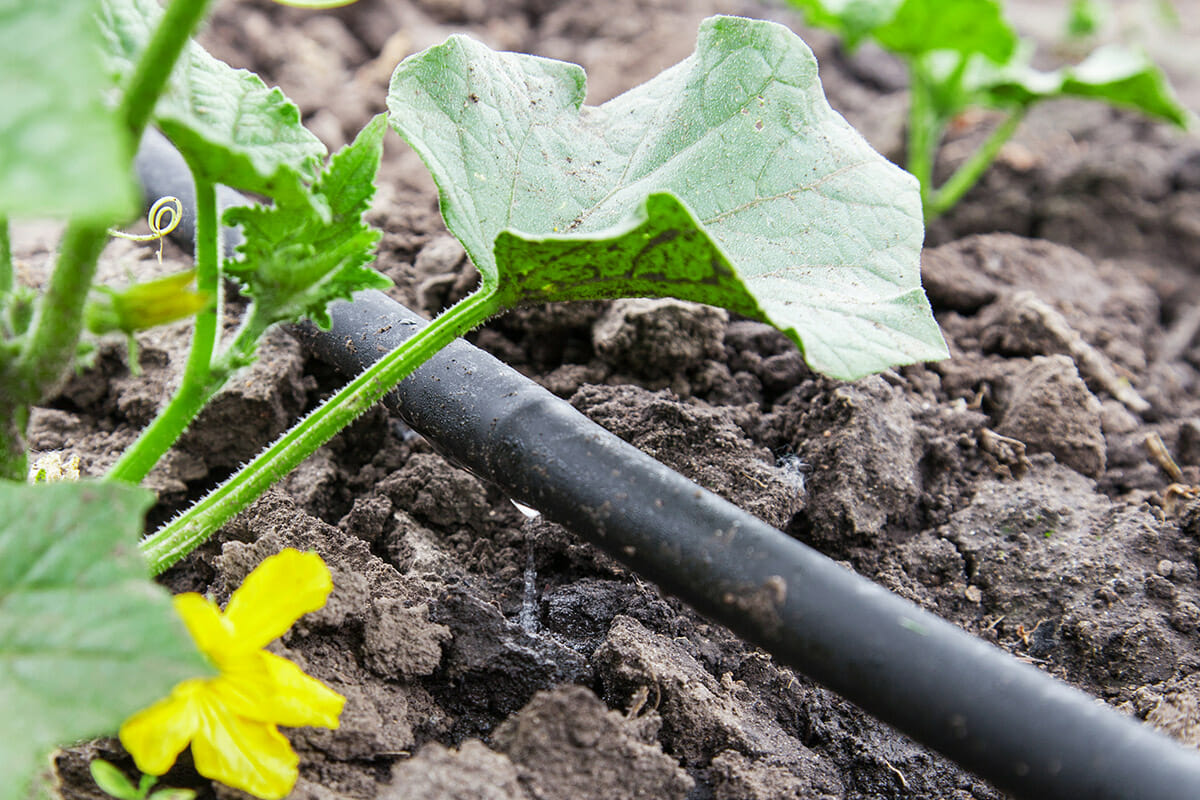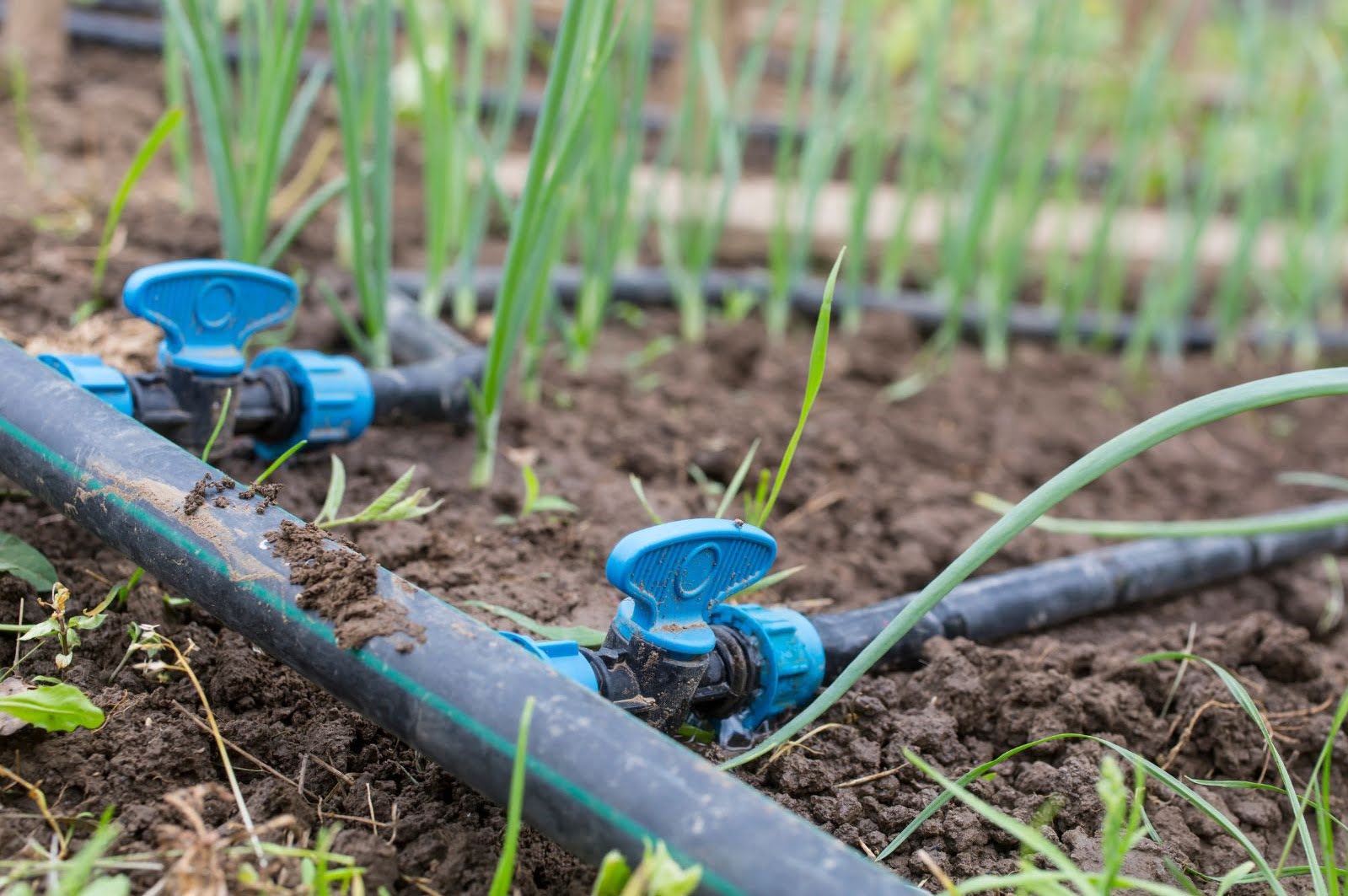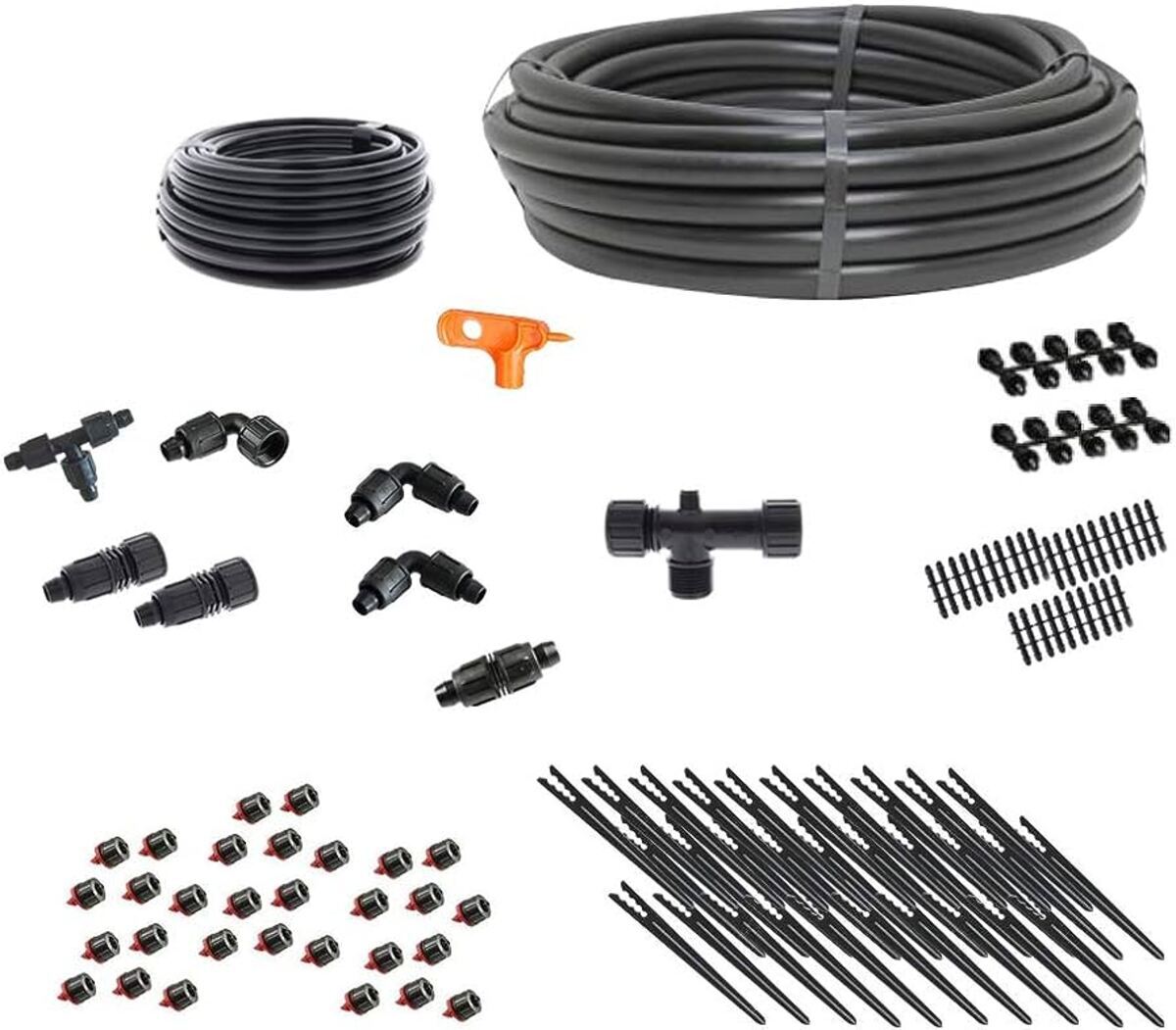Home>Gardening Tips and Tricks>Problem Solving>How Much Pressure For Gravity Fed Drip Irrigation System
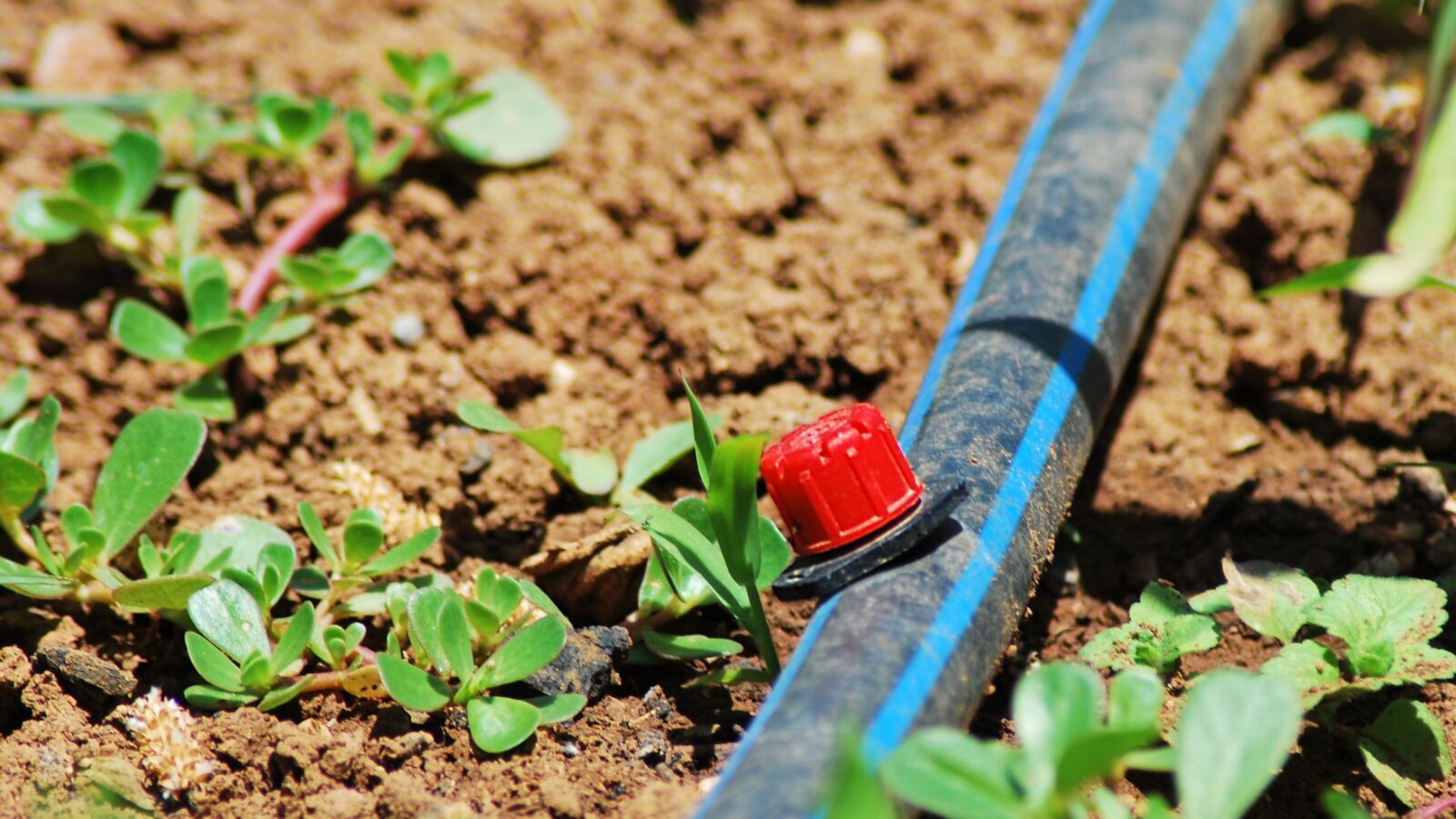

Problem Solving
How Much Pressure For Gravity Fed Drip Irrigation System
Published: November 15, 2023
Discover effective problem-solving techniques for gravity-fed drip irrigation and learn how to determine the ideal pressure for optimal results.
(Many of the links in this article redirect to a specific reviewed product. Your purchase of these products through affiliate links helps to generate commission for Chicagolandgardening.com, at no extra cost. Learn more)
Table of Contents
Introduction
Welcome to the world of gravity-fed drip irrigation! Whether you are a seasoned gardener or just starting out, understanding the importance of pressure in your irrigation system is crucial for success. In this article, we will delve into the intricacies of pressure requirements for gravity-fed drip irrigation systems and how to optimize it for maximum efficiency.
Gravity-fed drip irrigation is a method that uses the force of gravity to deliver water directly to the root zone of plants. It is a cost-effective and environmentally friendly solution, especially in areas with limited access to electricity or unreliable water sources. This irrigation technique ensures that water is efficiently delivered to the plants’ roots, minimizing water waste and maximizing plant health.
One of the key factors that determine the effectiveness of a gravity-fed drip irrigation system is the proper pressure. Pressure plays a vital role in regulating the flow rate and distribution of water to the plants. Insufficient pressure can result in uneven watering, clogged emitters, and ineffective irrigation, while excessive pressure can cause system damage and wastage of water resources.
Understanding the factors that affect pressure requirements, as well as how to calculate and maintain optimal pressure, is essential for the successful implementation of a gravity-fed drip irrigation system. In this article, we will explore these factors, guide you through the process of calculating pressure, and provide tips for troubleshooting pressure issues.
So, whether you are a DIY enthusiast or a professional gardener, this article will equip you with the knowledge needed to achieve the perfect pressure for your gravity-fed drip irrigation system. Let’s dive in!
Understanding Gravity Fed Drip Irrigation
Gravity-fed drip irrigation is a simple yet effective method of delivering water to plants using the force of gravity. Unlike other irrigation systems that rely on pumps and electricity, gravity-fed systems operate solely on the natural flow of water downhill.
The core principle of gravity-fed drip irrigation lies in the use of drip emitters or drippers, which deliver water directly to the root zone of plants. These emitters are strategically placed along a distribution line, known as the mainline, which is connected to a water source at a higher elevation.
As the water flows through the mainline, it drips slowly and steadily through the emitters, ensuring a targeted and precise application of water. This enables plants to absorb water more efficiently, reducing evaporation and runoff.
Using gravity to supply water has several advantages. Firstly, it eliminates the need for electricity or complex pumping systems, making it a cost-effective and environmentally friendly option. It also provides a consistent and controlled flow of water, ensuring that each plant receives the right amount of water needed for optimal growth.
Additionally, gravity-fed drip irrigation systems can be easily installed in both small and large-scale applications. From home gardens to agricultural fields, this method can be adapted to suit different irrigation needs.
It is important to note that gravity-fed drip irrigation works best when the water source is positioned at a higher elevation than the plants being irrigated. This elevation difference creates the necessary pressure for water to flow through the system.
A gravity-fed drip irrigation system typically consists of a water source, mainline, drip emitters, and optional components such as filtration systems, pressure regulators, and backflow preventers. Understanding the components and their role in the system is crucial for designing and maintaining an efficient setup.
By grasping the fundamentals of gravity-fed drip irrigation, you can harness the power of gravity to deliver water precisely where it is needed, promoting healthy plant growth while conserving water resources. In the next sections, we will explore the importance of proper pressure in gravity-fed drip irrigation systems and the factors that influence pressure requirements.
Importance of Proper Pressure
Proper pressure is a critical factor for the success of a gravity-fed drip irrigation system. It affects the overall performance, efficiency, and effectiveness of the system in delivering water to the plants’ root zones. Here are a few key reasons why maintaining the right pressure is crucial:
- Uniform Water Distribution: The water pressure determines the flow rate of water through the drip emitters. If the pressure is too low, the water may not reach all the plants in the system, resulting in uneven watering and potentially leaving some plants thirsty. Conversely, excessive pressure can cause overwatering and waste precious water resources.
- Optimal Plant Absorption: Proper pressure ensures the correct delivery of water directly to the root zone of plants. This allows the plants to absorb the water efficiently, maximizing their growth potential. When the pressure is too high, water may be sprayed or dispersed too forcefully, leading to poor absorption or damage to delicate plant structures.
- Prevention of System Damage: Maintaining the recommended pressure range helps prevent damage to the drip emitters, mainline, and other irrigation components. Excessive pressure can cause the emitters to burst or leak, resulting in water loss and reduced system lifespan. On the other hand, low pressure can lead to clogged emitters due to sediment accumulation.
- Water Conservation: Using the right pressure ensures that water is delivered efficiently and effectively to the plants’ root zones. This reduces water waste through evaporation, runoff, and overspray. By optimizing pressure, you can conserve water resources and promote sustainability in your irrigation practices.
- Energy Efficiency: Gravity-fed drip irrigation systems operate without the need for electricity or pumps. By ensuring proper pressure, you can minimize energy consumption and related costs, making it a more sustainable and cost-effective irrigation solution.
Understanding the importance of proper pressure in gravity-fed drip irrigation systems is key to achieving optimal plant growth, conserving water, and avoiding system issues. In the next section, we will explore the various factors that can influence the pressure requirements of a gravity-fed drip irrigation system.
Factors Affecting Pressure Requirements
When it comes to gravity-fed drip irrigation, several factors can influence the pressure requirements of the system. Understanding these factors will help you determine and adjust the ideal pressure for your specific setup. Here are the key factors that can affect pressure requirements:
- Elevation Difference: The elevation difference between the water source and the plants being irrigated plays a crucial role in creating the necessary pressure. The greater the elevation difference, the higher the pressure potential. However, it’s important to note that if the elevation difference is too high, it can lead to excessive pressure, which may require the use of pressure regulators to maintain the recommended pressure range.
- Mainline Length and Diameter: Both the length and diameter of the mainline can impact pressure requirements. Longer mainlines generally result in more pressure loss due to friction, requiring higher starting pressure. Additionally, using smaller diameter pipes can lead to higher pressure loss, necessitating higher initial pressure to compensate for the friction.
- Emitter Spacing and Flow Rate: The spacing between drip emitters and the desired flow rate per emitter are important factors that influence pressure requirements. If the emitters are closely spaced or require higher flow rates, it will require higher pressure to ensure that each emitter delivers the desired amount of water. Conversely, wider spacing or lower flow rates may require lower pressure.
- Water Source: The source of water for the gravity-fed drip irrigation system can also impact pressure requirements. Factors such as the available flow rate and water pressure from the source need to be considered. If the water source has limited flow or low pressure, it may necessitate adjustments in the system design to ensure adequate pressure for efficient irrigation.
- Irrigation System Design and Components: The design of the gravity-fed drip irrigation system itself, including components such as pressure regulators, filters, and backflow preventers, can impact pressure requirements. These components introduce additional resistance to water flow, affecting the overall pressure needed to maintain optimal irrigation performance.
It is crucial to carefully consider these factors when designing and adjusting your gravity-fed drip irrigation system. Analyzing the elevation difference, mainline length and diameter, emitter spacing and flow rate, water source characteristics, and system components will allow you to determine the optimal pressure requirements for your specific setup. In the next section, we will discuss the process of calculating the pressure for a gravity-fed drip irrigation system.
Calculating Pressure for Gravity Fed Drip Irrigation
Calculating the pressure requirements for a gravity-fed drip irrigation system is essential to ensure efficient and effective water delivery to your plants. By considering factors such as elevation difference, mainline length and diameter, emitter spacing, and flow rate, you can determine the ideal pressure for your system. Here are the steps to help you calculate the pressure:
- Measure the Elevation Difference: Start by measuring the vertical distance (in feet or meters) between your water source and the highest point of your drip irrigation system. This elevation difference will be a key factor in determining the pressure potential of your system.
- Determine the Mainline Length and Diameter: Measure the length of your mainline and note the diameter of the pipes used. These measurements, along with the material of the pipes, will influence the frictional loss of pressure in the system.
- Calculate Pressure Loss due to Friction: Use a pressure loss calculator or consult tables specific to the pipe material to estimate the frictional loss along the mainline. This calculation takes into account the length, diameter, and flow rate of your system.
- Consider Emitter Spacing and Flow Rate: Determine the desired spacing between drippers and the flow rate required for your plants. These factors will aid in calculating the extra pressure required to achieve the desired water delivery per emitter.
- Account for Additional Pressure Loss: Factor in the pressure loss caused by any additional components in your system, such as pressure regulators, filters, or backflow preventers. Consult the manufacturer’s specifications to determine the pressure loss associated with each component.
- Add Up the Pressure Requirements: Sum up the elevation difference, frictional loss, additional pressure loss, and extra pressure required for emitter spacing and flow rate. This will give you the total pressure required to efficiently operate your gravity-fed drip irrigation system.
Remember that the goal is to achieve a pressure within the recommended range for your specific drip emitters. Consult the manufacturer’s guidelines to ensure that the calculated pressure is suitable for the emitters you are using.
Calculating pressure for a gravity-fed drip irrigation system may seem complex, but it is an important step to optimize your system’s performance. By taking into account the elevation difference, mainline length and diameter, emitter spacing and flow rate, and other components, you can determine the ideal pressure for efficient and effective water delivery to your plants.
In the next section, we will explore the recommended pressure range for gravity-fed drip irrigation systems and the importance of maintaining optimal pressure.
Recommended Pressure Range
The recommended pressure range for a gravity-fed drip irrigation system typically falls between 10 to 25 pounds per square inch (psi), or 0.7 to 1.7 bars. This range ensures efficient water delivery to the plants while minimizing the risk of system damage or water wastage.
Maintaining pressure within this range allows for a consistent and controlled flow of water through the drip emitters. It ensures that each emitter delivers the desired amount of water to the plants’ root zones, promoting optimal plant growth and water conservation.
If the pressure falls below the minimum recommended range, below 10 psi or 0.7 bars, it may result in inadequate water supply to the plants. This can lead to stunted growth, uneven watering, and compromised plant health. It is essential to address any pressure issues promptly to ensure the well-being of your plants.
On the other hand, if pressure exceeds the maximum recommended range, above 25 psi or 1.7 bars, it can put stress on the system and result in damage to the drip emitters, mainline, or other components. Excessive pressure can lead to leakages, burst emitters, and wasted water. Installing pressure regulators or employing other pressure reduction techniques may be necessary to maintain pressure within the recommended range.
It is important to note that different types of drip emitters may have specific pressure requirements. Be sure to consult the manufacturer’s guidelines to ensure that the recommended pressure range aligns with the emitters you are using in your system.
Regular monitoring of the pressure is crucial to ensure that it remains within the recommended range. Utilize pressure gauges or other measurement devices to periodically check the pressure at various points in your system. This will allow you to make any necessary adjustments to maintain optimal pressure levels.
By adhering to the recommended pressure range, you can ensure the efficient and effective operation of your gravity-fed drip irrigation system, promoting healthy plant growth and responsible use of water resources.
Maintaining Optimal Pressure
Ensuring optimal pressure in a gravity-fed drip irrigation system is essential for efficient water delivery and the longevity of the system. Here are some tips to help you maintain the ideal pressure:
- Install Pressure Regulators: Pressure regulators are devices that help control and reduce the pressure in your irrigation system. Installing pressure regulators at appropriate locations, such as after the water source or at the beginning of the mainline, can help maintain a steady and controlled pressure within the recommended range.
- Monitor and Adjust Pressure: Regularly monitor the pressure in your system using pressure gauges or other measurement devices. Check the pressure at various points along the mainline to ensure uniform pressure distribution. If you notice that the pressure is consistently outside the recommended range, make necessary adjustments to bring it back into the optimal range.
- Inspect and Clean Drip Emitters: Over time, drip emitters can become clogged with debris or mineral buildup, affecting their performance and causing pressure issues. Regularly inspect and clean the emitters to ensure consistent water flow and proper pressure regulation.
- Maintain Filters: Filtration systems are commonly used in gravity-fed drip irrigation to prevent debris and sediment from entering the system and clogging the emitters. Regularly clean and maintain the filters to avoid pressure loss due to blockages.
- Check for Leaks: Inspect your system for any leaks or damaged components. Even small leaks can lead to pressure loss and inefficiencies in water delivery. Repair or replace any faulty components to maintain optimal pressure in your system.
- Adjust System Design: If you consistently struggle to maintain the recommended pressure range, consider adjusting the design of your gravity-fed drip irrigation system. This may include modifying the mainline diameter, adjusting the elevation or position of the water source, or redistributing drip emitters to balance the flow and pressure throughout the system.
Regular maintenance and monitoring are key to maintaining optimal pressure in your gravity-fed drip irrigation system. By implementing these practices and taking timely action to address any pressure issues, you can ensure the efficient and effective delivery of water to your plants, promoting healthy growth and conserving water resources.
In the next section, we will explore some common pressure issues in gravity-fed drip irrigation systems and provide troubleshooting tips to resolve them.
Troubleshooting Pressure Issues
Pressure issues can arise in a gravity-fed drip irrigation system, impacting its performance and the health of your plants. Here are some common pressure issues and troubleshooting tips to help you identify and resolve them:
- Low Pressure: If you are experiencing low pressure in your system, several factors could be the cause:
- Clogged Emitters: Check if the drip emitters are clogged with debris or mineral buildup. Clean or replace any clogged emitters to restore proper water flow and pressure.
- Leakage: Inspect the system for any leaks, including at the connections, valves, or mainline. Repair any leaks to prevent pressure loss.
- Insufficient Elevation Difference: If the water source’s elevation difference is not significant enough, it may not generate adequate pressure. Consider adjusting the positioning or elevation of the water source to increase pressure.
- Blockage or Damage: Inspect the mainline for any blockages or damage that may impede water flow and reduce pressure. Clear blockages or repair damaged sections as needed.
- High Pressure: Excessive pressure can cause damage to the system and lead to uneven watering. Here are some steps to address high pressure issues:
- Pressure Regulators: Install pressure regulators in your system to regulate and reduce the pressure to the recommended range.
- Adjust Elevation Difference: If the elevation difference is too high, it can result in excessive pressure. Consider adding pressure reducing valves or adjusting the positioning of the water source to moderate the pressure.
- Check for Partially Closed Valves: Ensure that all valves in the system are fully open. Partially closed valves can cause restricted flow and elevated pressure.
- Reduce Emitter Flow: If the flow rate per emitter is high, it can lead to increased pressure. Adjust the emitter flow rate or consider using emitters with lower flow rates to alleviate high pressure.
It is important to note that these troubleshooting tips are general guidelines, and the specific solution may vary depending on your system’s design and components. Consider consulting with an irrigation professional if you encounter persistent pressure issues or if you require more specialized guidance.
Regular inspections and maintenance, combined with thorough troubleshooting, will help you identify and resolve pressure issues in your gravity-fed drip irrigation system. By addressing these issues promptly, you can ensure optimal pressure and maximize the efficiency of your irrigation system.
With proper pressure maintenance and troubleshooting, you can enjoy the benefits of a well-functioning gravity-fed drip irrigation system, promoting healthy plant growth and efficient water usage.
Conclusion
Gravity-fed drip irrigation systems offer an efficient and environmentally friendly solution for delivering water to plants. To ensure their effectiveness, proper pressure is crucial. Understanding the factors that affect pressure requirements and how to maintain optimal pressure is essential for maximizing the system’s efficiency and promoting healthy plant growth.
Throughout this article, we have explored the fundamentals of gravity-fed drip irrigation, the importance of maintaining proper pressure, and the various factors that can influence pressure requirements. We’ve discussed the steps involved in calculating pressure and the recommended pressure range of 10 to 25 psi (0.7 to 1.7 bars) for a gravity-fed drip irrigation system.
We’ve also covered the significance of maintaining optimal pressure, including the installation of pressure regulators, regular monitoring and adjusting of pressure, inspection and cleaning of emitters, and proper maintenance of filters and components. Troubleshooting tips for low and high pressure issues have been provided to help you address any pressure-related challenges that may arise.
By adhering to the recommended pressure range and implementing the tips and techniques shared in this article, you can ensure efficient water delivery, promote optimal plant growth, conserve water resources, and extend the lifespan of your gravity-fed drip irrigation system.
Remember, maintaining proper pressure is just one aspect of an effective gravity-fed drip irrigation system. It is also important to consider other factors such as proper spacing of emitters, scheduling of irrigation cycles, and appropriate water management practices.
Whether you are a novice or an experienced gardener, incorporating gravity-fed drip irrigation with optimal pressure can revolutionize the way you irrigate your plants. Enjoy the benefits of a well-designed gravity-fed drip irrigation system, where water is efficiently delivered to the root zones of your plants, promoting healthy growth, conserving water, and contributing to a greener and more sustainable environment.
